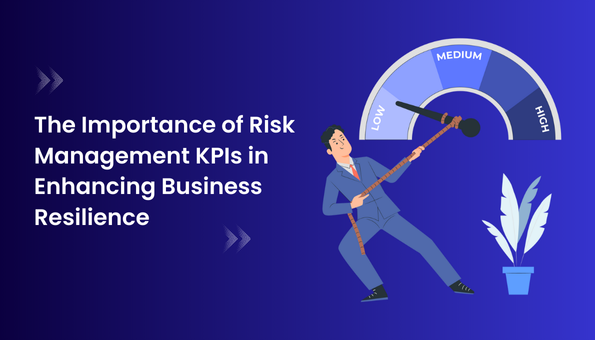The Role and Importance of Risk Management in Ensuring Organizational Continuity
Wiki Article
Discovering the Value of Risk Management for Effective Decision-Making Approaches
In the intricate world of service, Risk Management emerges as a crucial factor in the decision-making procedure. The capacity to identify prospective hazards and opportunities, and strategize appropriately, can lead to the distinction in between success and failure.Comprehending the Principle of Risk Management
Risk Management, an essential component in decision-making, is often misconstrued or oversimplified. Generally, it refers to the recognition, assessment, and prioritization of threats to lessen, monitor, and manage the chance or impact of unfortunate events. It's not merely about preventing negative end results, yet likewise concerning acknowledging prospective opportunities. Risk Management includes regimented and structured approaches, making use of information and insightful assessments. It calls for a comprehensive understanding of the organization's context, purposes, and the prospective dangers that could combat them. From monetary unpredictabilities, legal liabilities, critical Management errors, to crashes and natural calamities, it resolves different risks. Notably, efficient Risk Management is not stagnant; it's a constant, positive process that progresses with changing circumstances.The Role of Risk Management in Decision-Making Processes
In the realm of calculated planning and service procedures, Risk Management plays an essential function in decision-making processes. It aids in determining possible risks and unpredictabilities that can influence the accomplishment of business objectives. By tracing these threats, firms can formulate techniques to minimize their impact, making sure organization connection and stability. Risk Management therefore ends up being a crucial device in decision-making, helping leaders to make informed choices based on a detailed understanding of the threats involved. It encourages a proactive method, allowing companies to prepare for and prepare for possible future scenarios. This substantially minimizes the chance of adverse effects, advertising much more efficient and efficient decision-making strategies. Risk Management serves as a vital part in the decision-making procedures of any kind of organization.
How Risk Management Boosts Strategic Planning
In the context of calculated planning, Risk Management plays a critical role. Launching with the recognition of possible dangers, it even more extends to the execution of Risk mitigation measures. The duty of Risk Management is not static but dynamic, as it requires constant tracking and adjusting of approaches.Recognizing Possible Threats

Implementing Risk Mitigation
Having established the value of recognizing possible threats, the following action is to check out Risk reduction. This procedure includes establishing and applying approaches to take care of recognized threats effectively. It is an important element of strategic preparation as it boosts decision-making by decreasing possible negative results. Risk mitigation methods can vary from Risk avoidance, Risk transfer, to run the risk of reduction. Each technique ought to be tailored to the details Risk, considering its prospective effect and the organization's Risk tolerance. Additionally, efficient Risk reduction calls for a deep understanding of the Risk landscape and the potential impact of each Risk. This understanding enables companies to focus on risks and allocate sources successfully, making certain that the most significant hazards are attended to first.Monitoring and Readjusting Techniques
Though Risk mitigation is an important step in strategic preparation, continuous surveillance and adjustment of these methods is equally crucial. This ongoing process permits organizations to identify brand-new risks and reassess existing ones, making sure the implemented techniques continue to be effective in the ever-changing business environment. It also offers an opportunity to evaluate the success of the Risk Management measures, allowing modifications to be use this link made where essential, further enhancing calculated preparation. Efficient tracking and modification call for the use of analytics and vital performance indicators (KPIs) to determine efficiency. These devices provide important data-driven insights that can inform critical decision-making. For that reason, tracking and changing Risk Management approaches is a crucial element for enhancing a company's durability and calculated preparation.Situation Studies: Successful Risk Management and Decision-Making
In the globe of company and money, successful Risk Management and decision-making usually serve as the columns of thriving enterprises. These situations highlight the worth of sharp Risk Management in decision-making procedures. These cases highlight the vital function of Risk Management in critical decision-making.Tools and Strategies for Efficient Risk Management
Navigating the complex labyrinth of Risk Management needs the right set of strategies and tools. These tools, such as Risk registers and warm maps, help in identifying and examining potential risks. Techniques consist of both measurable methods, like level of sensitivity evaluation, and qualitative methods, you could look here such as SWOT analysis. These aid in focusing on risks based on their prospective impact and likelihood. Risk feedback strategies, a key part of Risk Management, include accepting, preventing, moving, or mitigating risks. Monitoring and managing threats, through regular audits and evaluations, make sure that the strategies stay efficient. With these devices and strategies, decision-makers can browse the complex landscape of Risk Management, therefore assisting in notified and reliable decision-making.Future Fads in Risk Management and Decision-Making Methods
As we check out the substantial landscape of Risk Management, it comes to be apparent that the methods and devices used today will proceed to evolve. The idea of Risk culture, where every member of a company is mindful and involved in Risk Management, will certainly get more prominence. These patterns proclaim a more positive and inclusive method in the direction of Risk Management and decision-making.Verdict

Risk Management hence comes to be an essential tool in decision-making, helping leaders to make informed selections based on a detailed understanding of the dangers involved. Risk reduction techniques can range from Risk evasion, Risk transfer, to take the chance of reduction (importance of risk management). Reliable learn the facts here now Risk mitigation requires a deep understanding of the Risk landscape and the possible impact of each Risk. Risk action methods, a crucial component of Risk Management, include accepting, staying clear of, transferring, or mitigating risks. The principle of Risk society, where every member of an organization is mindful and involved in Risk Management, will gain extra importance
Report this wiki page